The back stories of Cuba’s typical food and drink are as colorful as the Cubans themselves. These are some of the most intriguing within Cuban food culture.
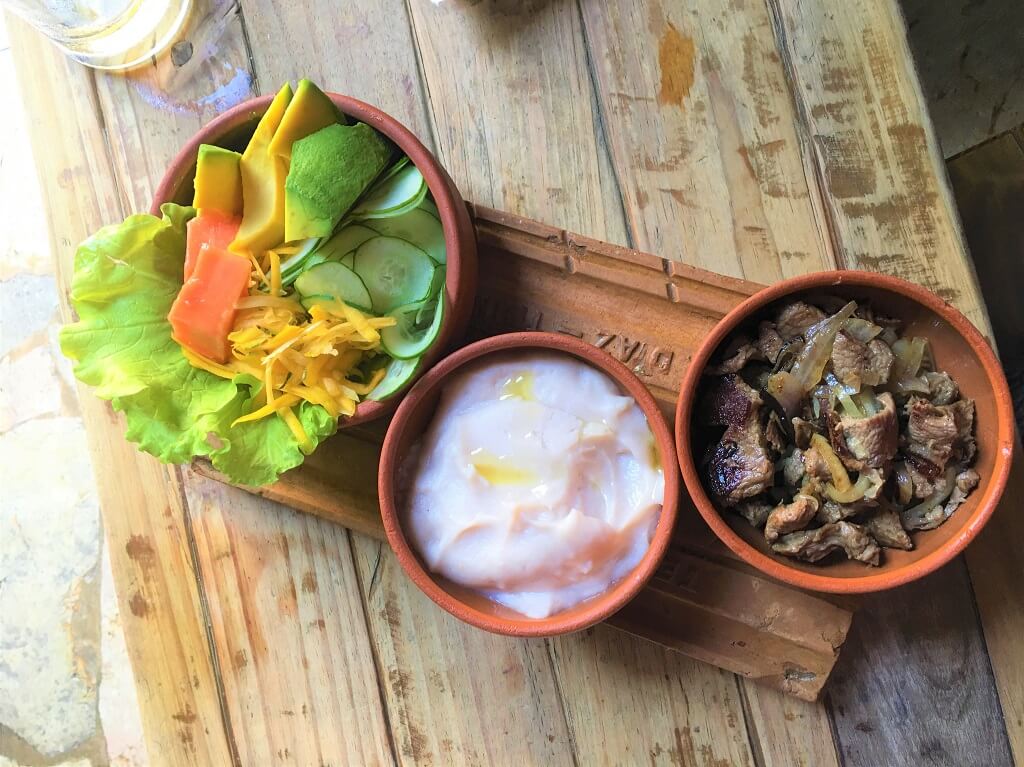
Table of Contents
ToggleWhat is Cuban food?
Cuba’s typical food is a blending of the many cultures that influenced Cuban cuisine; Spanish, African – particularly West African, Chinese, Middle Eastern, indigenous and more.
You can see traces of Cuba’s rich culinary heritage in all the typical foods of Cuba and the legendary cocktails as well.
The “mojito,” the mother of all Cuban drinks
The mojito is arguably Cuba’s national drink and one of the Cuban cocktails that circled the globe. It is a cocktail with many legends surrounding its origin.
One is that Sir Francis Drake, the English pirate (or English explorer, depending on whose side you were on) first mentioned the mojito on a raid of Spanish possessions in the Caribbean, but there is no corroborating evidence of this.
Another legend has the famous Havana bar, La Bodeguita del Medio, inventing the mojito, also untrue. The true story is much more interesting.
Indigenous populations in the Caribbean used a form of alcohol or aguardiente made from fermented natural ingredients combined with lime, and mint – all ingredients that go into a mojito – to cure certain diseases.
When the Spanish arrived in Cuba, many of the sailors on board were suffering from scurvy.
They tried the local alcoholic drink and noticed a rapid and significant improvement in the sailors’ condition caused by the citrus.
Undoubtedly, the mellow buzz generated by the “medicine” contributed to the drink’s popularity.
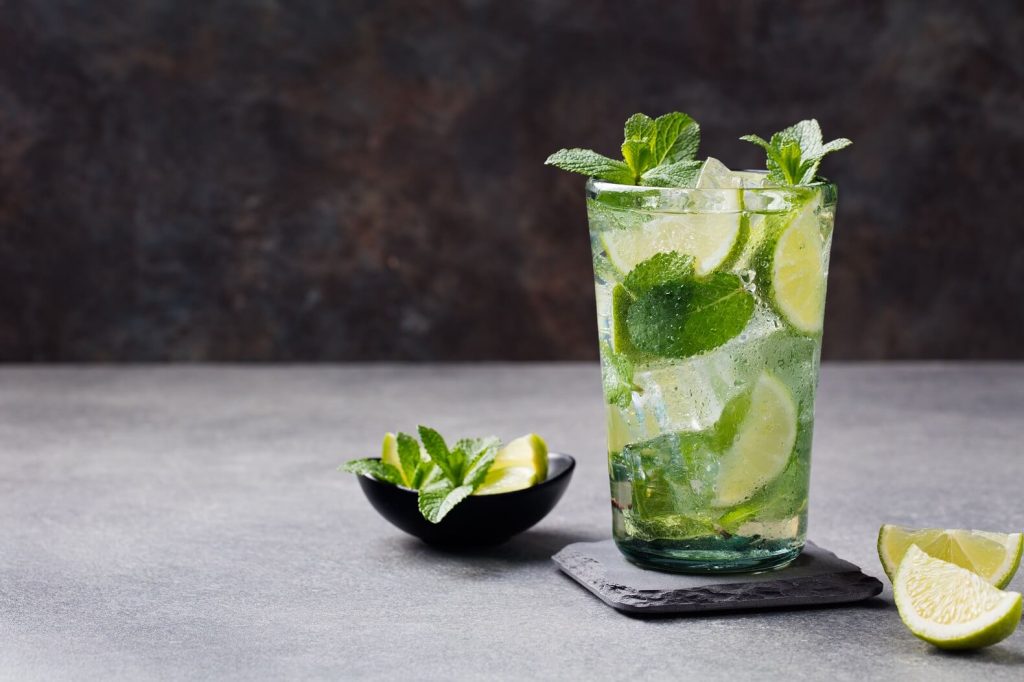
One could argue the mojito dispensers would recommend to patients, “Take two mojitos and call me in the morning.”
Centuries passed and the drink evolved. The Spanish and Portuguese brought sugar cane to the Americas in the mid-1500s, developed sugar cane plantations and created a massive sugar empire.
There is evidence that sugarcane was used to make aguardiente around this time.
Rum, as we know it today, did not become readily available until the 17th century, but it made up for lost time, quickly becoming the main ingredient of the drink.
What we drink today in a local bar is the direct descendant of the Taino medicine of over 500 years ago.
So where did the name mojito come from? Some believe it comes from the word “mojo,” (pronounced moho), a Cuban marinade used for seasoning, that also contains citrus.
The famous Havana bar, La Bodeguita del Medio, has been very popular since it opened in 1942.
Ever a Havana barfly, Ernest Hemingway, enjoyed the drink there and contributed to its popularity. One of the characteristics of Bodeguita is that patrons write their names on the walls.
It is rumored that Hemingway himself also left his signature and comments on the wall saying, “Mi mojito en la Bodeguita, mi daiquiri en El Floridita.” True or not, it’s a cool story contributing to the legend and popularity of the mojito.
READ NEXT: 10 Unique Havana experiences – a local’s guide

Ropa Vieja: a 2,500 year-old-recipe
Who knew that Cuban food history was so ancient? And how did this ancient dish evolve into Cuba’s typical food?
There are two rumored origins of ropa vieja, Cuba’s typical food par excellence and arguably the country’s national dish.
The first is that a poor old man in Spain needed food for his family so he shredded his clothes, put them into a pot with water and prayed over it fervently.
The dish miraculously turned into a hearty stew and the old man was able to eat and feed his family. Hence the name, ropa vieja, which translates into “old clothes.”
OK, so that’s one narrative. Equally fantastical but nevertheless, unquestionably true is this other narrative.
Ropa vieja, Cuba’s culinary classic, originated in ancient Judea around 500 BCE. Wait…what?! Read on.
Conservative Jewish law dictated that one cannot cook on the Sabbath.
Therefore, cooks in ancient Judea would prepare the food the night before the Sabbath and slow cook it during the night so it would be ready to eat throughout the Sabbath to comply with Jewish laws.
This was called a cholent. The meat is shredded with slow cooking.
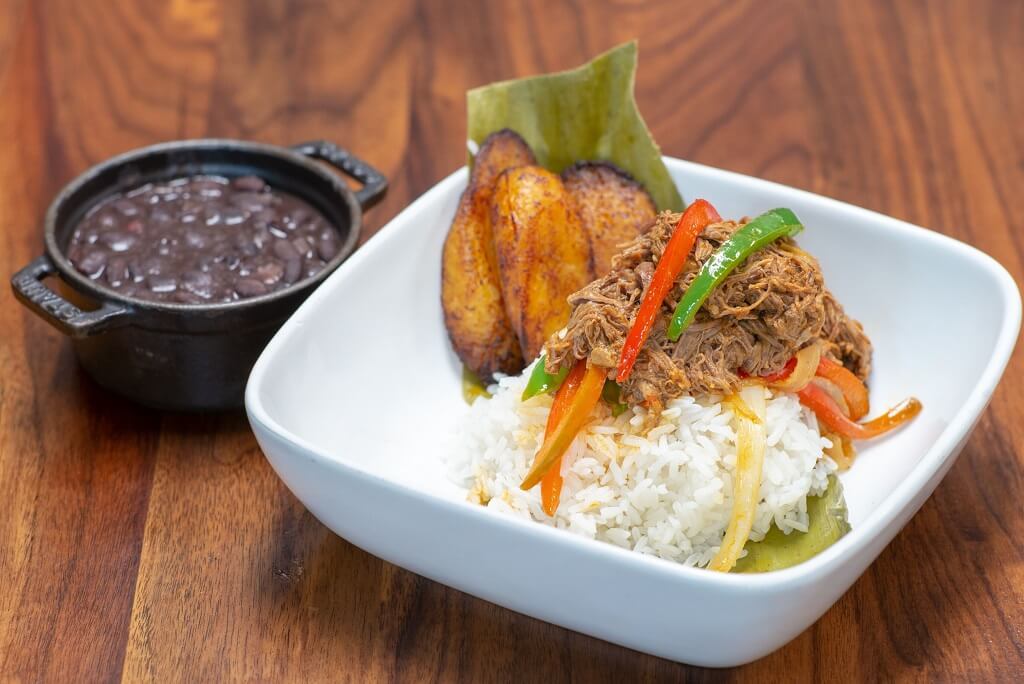
Over the centuries, the delectable stew of shredded beef in a spiced sauce spread to North Africa and then to the Canary Islands and mainland Spain where the Sephardic Jews further refined it.
Ropa vieja was already a long-established, well-known dish when the Spaniards- mostly from the Canary Islands- brought it to the Americas and the Philippines where it is still enjoyed today.
The first recorded incidence of ropa vieja in Cuba was in 1856.
A dish this ancient and well-traveled can’t help but have many variations.
In the Canary Islands, chicken and chickpeas are frequently used as ingredients instead of beef.
In the Philippines, it is sautéed with plantains, vegetables and a hint of fish sauce.
In Cuba, during the “special period,” ropa vieja evolved along with the lack of ingredients to the point where it was unrecognizable as the classic dish.
Today ropa vieja is served in all the countries influenced by Spain and beyond, but Cubans consider the dish their own.
Is the Cuban sandwich typical food in Cuba?
The Cuban sandwich has become ubiquitous. Not only is it now found all over the United States, but you’ll also find it in destinations as far-flung as Iceland and Armenia.
But where was the Cuban sandwich invented? Cuba, you say…nope. Most people will tell you the Cuban sandwich is Cuba’s typical food, but nobody in Cuba has ever heard of a Cuban sandwich.
Two American cities claim to be the originators of this delectably delicious delight: Miami and Tampa. Let’s examine the evidence starting with a bit of history.
In the Havana of the mid-1800s, Vicente Martinez Ybor, an immigrant from Spain, developed a cigar enterprise.
These were the days of Cuba’s first wars of independence against Spain.
Vicente was discovered to be a supporter of the Cuban freedom fighters by the Spanish authorities who wanted to arrest him.
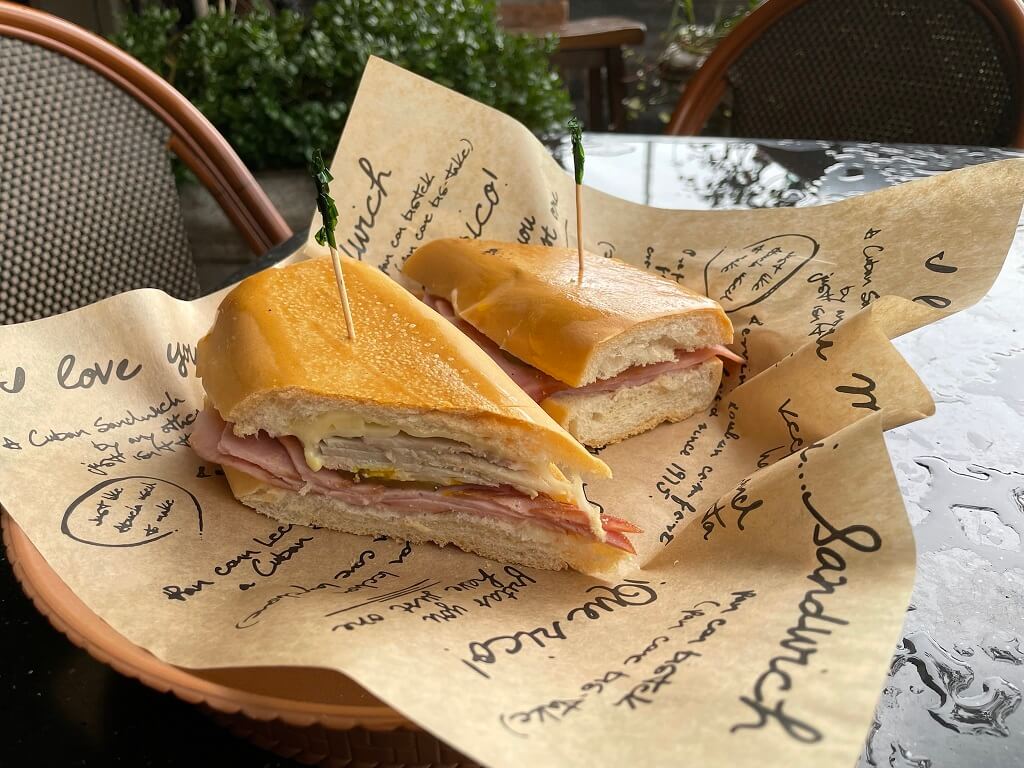
To save his life, Vicente fled first to Key West and then to Tampa where he again established his tobacco business.
Tampa had a lot going for it at the time; ideal weather for growing tobacco and cheap land.
But the most important feature of the city was the new railway that joined the city to the nation’s largest and most important markets in the northeast.
The railroad and hefty subsidies from the Tampa government collaborated to make Vicente’s business boom.
The business became so successful, in fact, that the part of the city where Vicente Martinez Ybor settled was christened Ybor City.
This flourishing cigar enterprise attracted workers and they gravitated to Tampa by the hundreds.
The workers were mostly Cubans, but other groups soon arrived in search of jobs, Spaniards, eastern European Jews, southern Italians, Germans and others. Soon the population of Ybor City reached over 5,000.
At that time Cuban workers were in the habit of working in Tampa for some months and then returning to Cuba.
Demand for the tobacco product was so high, however, that Vicente had to figure out a way to keep the workers in Tampa.
First of all, Vicente built little houses for the workers and sold them at cost. Then he enticed the workers to stay at their tobacco rolling stations by offering meals at their posts.
After brainstorming the type of meal that would appeal to the many different ethnicities, the perfect meal was decided upon; pork for the Cubans, ham for the Spaniards, salami for the Italians, cheese and mustard for the Germans, all layered between two pieces of crusty Cuban bread.
Somehow the salami was lost once the sandwich left Tampa but it is still an important ingredient of the sandwich in its home city.
This hearty sandwich, convenient and delicious was named the “Cuban sandwich” or simply, a “Cubano” because it was created by Cubans to cater to the mostly Cuban tobacco workers. Today it has worldwide popularity.
Miami frequently lays claim to being the home of the Cuban sandwich. But in 1895 Miami was not even incorporated as a city.
Roughly 300 mostly Bahamian laborers inhabited the sleepy hamlet.
Tampa, on the other hand, was the busy center of the most important cigar-producing center in the world in 1895.
Thousands of workers enjoyed their Cuban sandwiches as they rolled the finest cigars day after day, shift after shift.
Over time Miami would become one of the most important cities in the U.S., a center of finance, culture, tourism and new technologies, but definitely NOT the birthplace of the Cuban sandwich.
That honor goes to Tampa.
Read Next: Unique Cuban expressions. What they mean and how to use them.
The Elena Ruz sandwich: a part of Cuban food history and culture
And now for a very unusual sandwich. Although not Cuba’s typical food, the Elena Ruz was unquestionably invented in Cuba and is definitely part of Cuban cuisine.
This unusual combination of tasty ingredients combines cream cheese, turkey and strawberry jam or preserves on a soft, sweet media noche bread.
Legend has it that a young Havana socialite named Elena Ruz would stop at El Carmelo, one of Havana’s restaurants in the upscale Havana neighborhood of Vedado, after leaving parties and dances with her companions.
She asked the restaurant to prepare a unique sandwich to her exact specifications; cream cheese on one side of the bread, strawberry jelly on the other, turkey slices in the middle, butter slathered on the outside of the bread, put into a sandwich press until warm.
Elena would ask for the same thing whenever she stopped at El Carmelo which is still in operation today in Havana.
Others tasted the sandwich, liked it, and recommended it. Soon the restaurant named the sandwich after Elena and made it a staple on the menu.
The Elena Ruz began appearing in other restaurants and eventually became a popular sandwich in Cuban restaurants nationwide and overseas. You can order an Elena Ruz in most Cuban restaurants today.
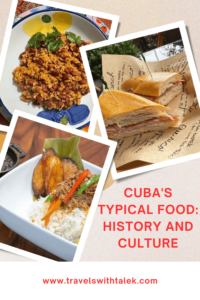
Read Next: The Nature of Cuba: National parks and Biosphere reserves
The Daiquiri: the other Cuban drink
Alas, not only was the daiquiri NOT invented in the fabled Floridita bar in Havana, but it wasn’t invented in Havana at all.
The popular Cuban drink has humble origins in Daiquiri, a little mining town on the far eastern side of the country near Santiago de Cuba.
In the 1930’s, the story goes, American mining engineer, Jennings Cox, and his buddy, Italian Giacomo Pagliuchi, were the true creators of the legendary cocktail.
Cox was working in the Daiquiri mines when friends came to visit. He offered them drinks but saw he had run out of just about everything.
Wanting to be hospitable he grabbed what ingredients were at hand; white rum, sugar and lime, and concocted a refreshing drink. His guests loved it and Pagliuchi named the drink in honor of the town, “Daiquiri.”
Now the plot thickens. Delighted with their creation, Cox and Pagliuchi showcased the drink at a local bar where a customer named Emilio Gonzalez took a liking to it.
Gonzalez was in Daiquiri on business but lived in Havana and was in the habit of frequenting the Floridita bar, in existence at the same location since its opening in 1817.
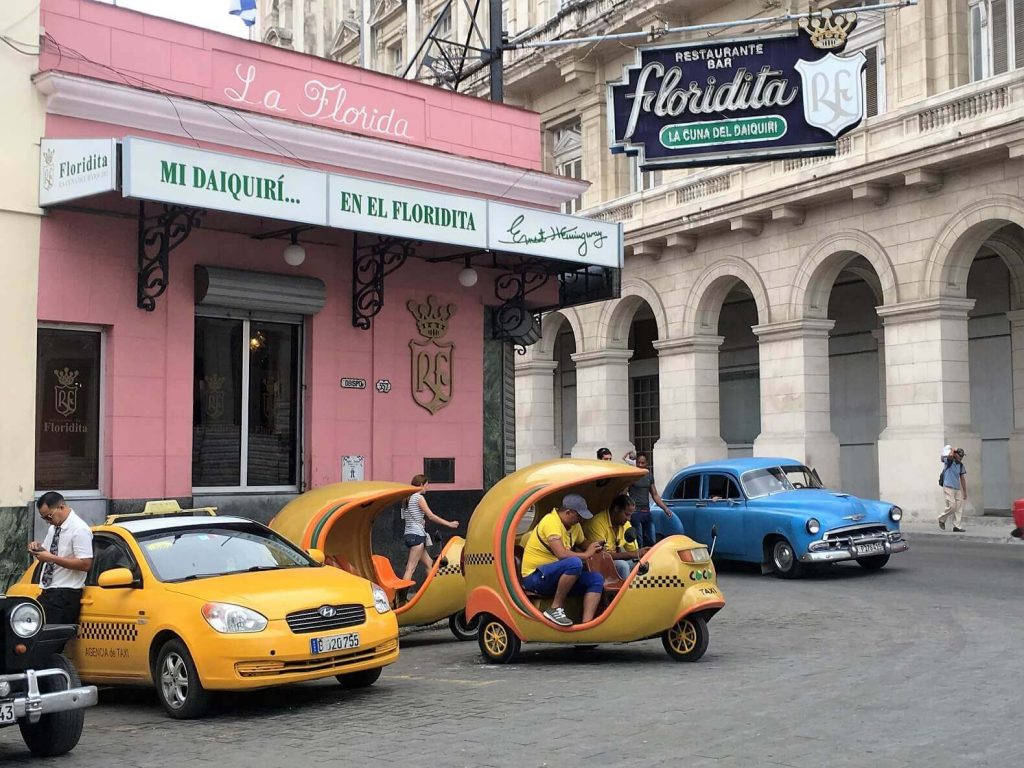
Back in Havana, Gonzalez showed the drink to his friend, Constantino Ribalaigua, the Floridita’s owner. Expert bartender that he was, Ribalaigua knew a good thing when he saw it.
He immediately began experimenting with different rums and measurements. Ribalaigua’s tinkering finally arrived at the classic cocktail we know today. He knew he had a winner.
The drink’s popularity grew. Then, writer Ernest Hemingway, sometimes referred to as Papa, stumbled upon the Floridita, ordered the house drink – by now the daiquiri – and continued to consume it almost daily for many years.
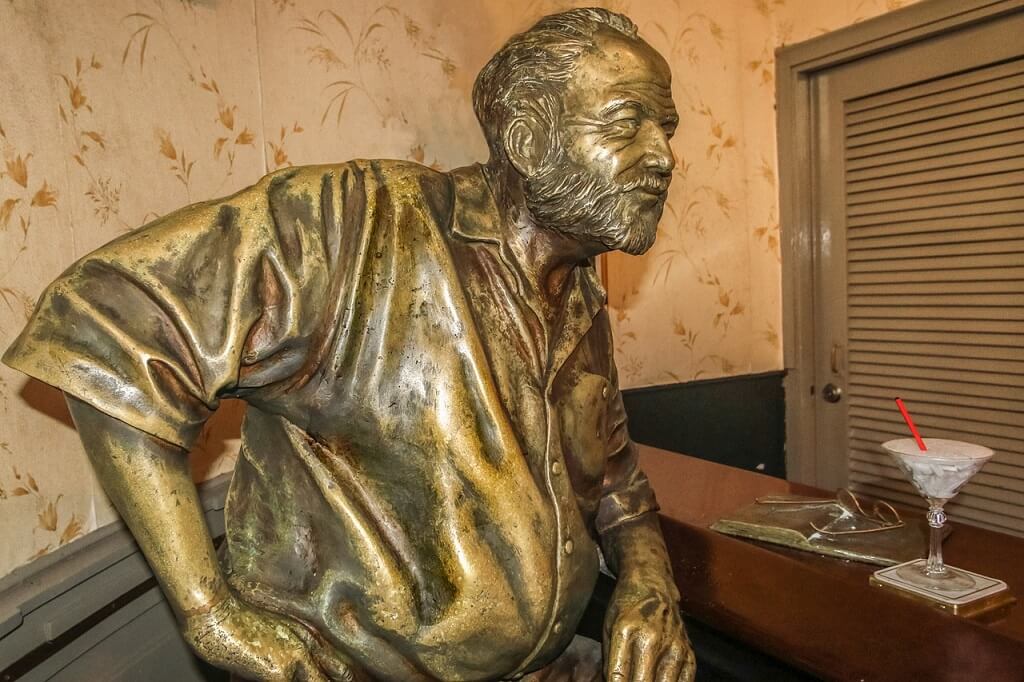
The daiquiri was rumored to be Papa’s favorite drink and it owes its worldwide popularity to Hemingway whose life-size statue sits at his favorite seat at the bar.
Read Next: Best books about Cuba to understand the country,
Pan con Timba: Cuban traditional food with a unique origin
When the British arrived in Cuba in the late 1870s to help build the railway system, they saw that the local people ate bread with bars of guava paste.
Back then the guava bars were made with dark sugar. The wooden slabs used to construct the tracks were dipped in petroleum to seal them, giving them an almost black color, just like the guava bars.
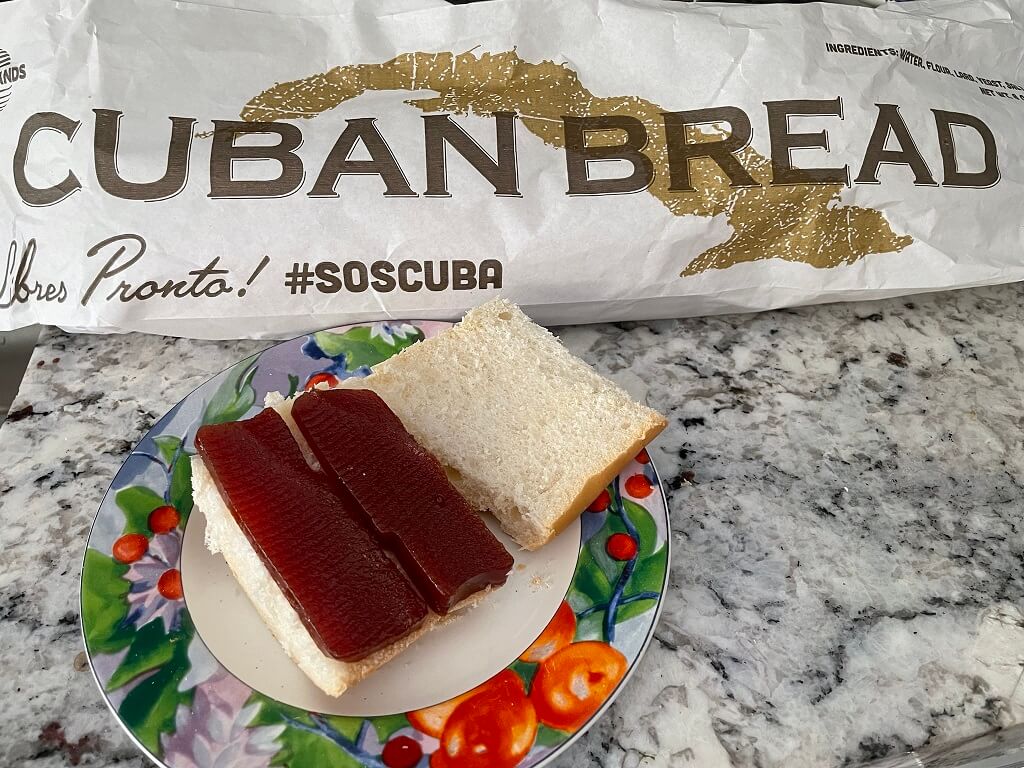
The wooded railroad track boards were called timbers and as they resembled the dark guava slabs, the British started to refer to the Cuban snack as “bread with timber.”
Over time the workers began to refer to the snack as “pan (bread) with timba,” in Spanish, pan con timba. The name stuck and is still in use today.
A more upscale version of pan con timba is bread with guava and either cream cheese or gouda.
Read Next: How a fascinating book, “The Cubans” helped me discover a favorite writer.
Cuba Libre: the patriotic Cuban drink
After the end of the Spanish-American War, Cuba was occupied by the United States from 1898 to 1902.
During this time the Americans brought with them to Cuba many Americanisms including the epitome of Americana, Coca-Cola.
In the euphoria of victory over the Spaniards and freedom for Cuba, it seemed inevitable that the two beverages representative of their originating countries; rum in Cuba and Coke from the U.S. would meet, marry, and go on to live a long and happy life together.
The legend is that a group of Cuban soldiers and members of Teddy Roosevelt’s Rough Riders were celebrating the end of the war together in an Old Havana bar.
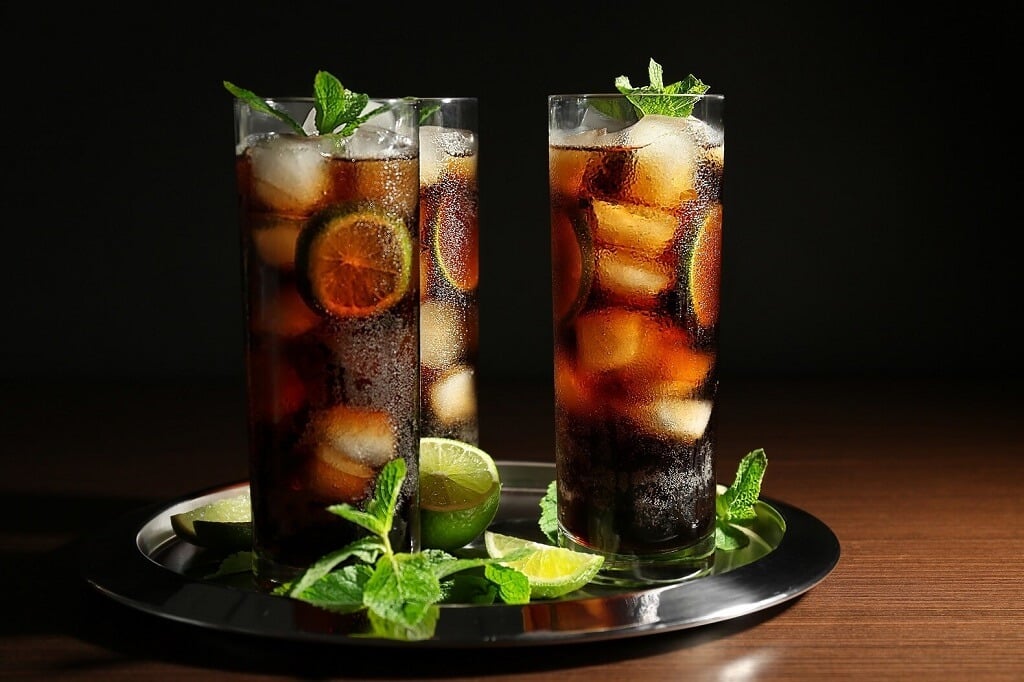
One of the soldiers ordered the drink with a slice of lemon, a drink he had already tasted in other bars. He encouraged others to try it with the toast, “Viva Cuba Libre” and, at the risk of sounding cliche, the rest, as they say, is history.
The Cuba Libre was a firmly established, popular cocktail by the early 1900s. But it was in the 1920s that the Cuba Libre and other Cuban cocktails’ fame soared.
Prohibition in the United States was an opportunity for Americans to legally imbibe in Cuba, just 90 miles from the U.S.
And imbibe they did! Thanks to prohibition in the U.S., Cuban cocktails became famous throughout the world.
Read Next: Old Havana self-guided walking tour – with map!
Beans! Cuban history and culture represented in Cuban dishes
So what’s the deal with beans?
Ask any Cuban what congri is and you’re likely to get a couple of different answers. Some will tell you the word describes all rice and bean dishes.
Others will say it only refers to red beans and rice. Still others insist it is a regional dish. So, what’s correct?
Cuban journalist and anthropologist, Fernando Ortiz, author of several books on Afro-Cuban culture speculates that the word congri came to Cuba from Haiti during the Haitian Revolution in the early 1800s.
However, he didn’t specify if the beans were red or black.
The word for rice and beans in Haitian Creole is “diri pwa.” No connection there.
But if you go further back to the African origins of the Haitian people, you learn that rice in Congolese is riz, so it is quite possible that rice from Congo…Congo riz…evolved into congri.
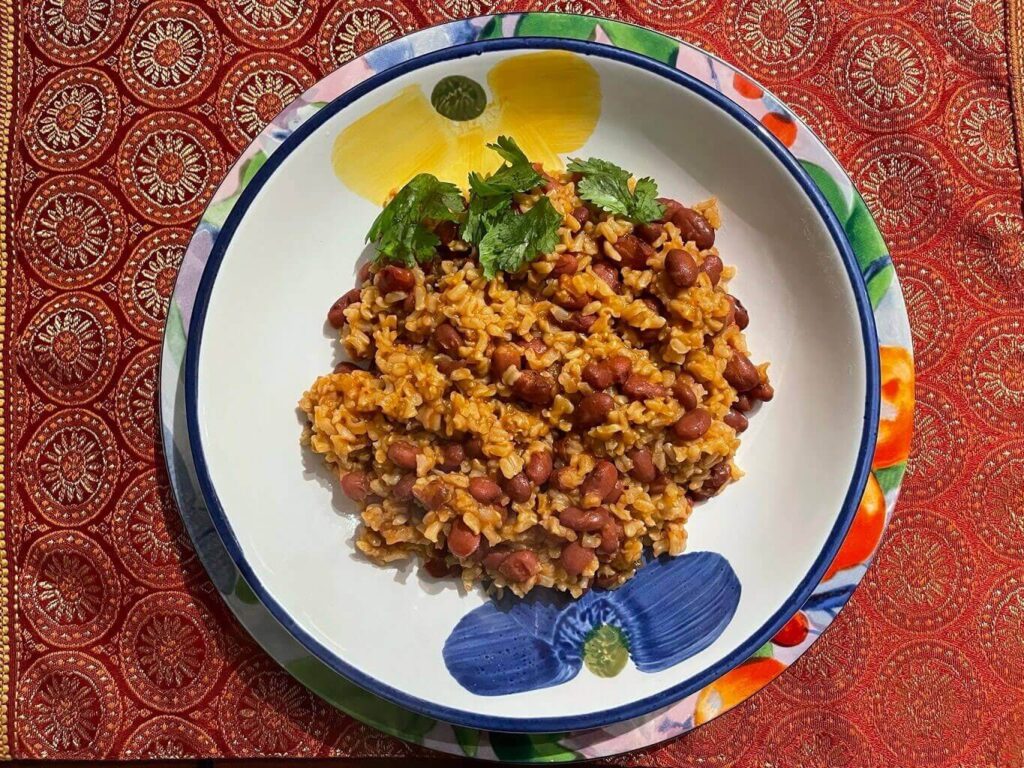
And, as if to further confirm this suspicion, one of the Congo’s national dishes is rice and red beans.
So, it is a safe bet that congri originated in West Africa, like so many Cuban dishes, and that it originally referred to red beans and rice.
The origins of mixed rice and black beans, moro, are even more interesting. Moros is short for “moros y cristianos” which translates into Moors and Christians.
Spain battled the Moors for centuries until successfully ousting them from Spain in 1492.
The Moors were darker-skinned northern Africans, the Spaniards lighter-skinned.
Some imaginative soul decided to refer to the black beans as Moros and the rice as Christianos and over the years the dish was shortened to moros, Cuba’s typical food.
So many races and ethnicities crisscross Cuba adding to the culture’s rich diversity. It’s fascinating to see this heritage reflected in the cuisine.
If you want to experience Cuban culture in the United States, Little Havana, one of Miami’s coolest neighborhoods, is your best bet.
Where to stay in Little Havana.
Want to learn more about Cuba’s typical food and Cuban food history and culture, check out these cookbooks and reference guides.
What are your thoughts on Cuba’s typical food? Is Cuban cuisine one of your favorites? Let us know in the comments.
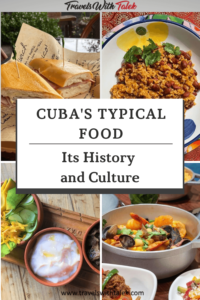

BTW, if you are getting ready for your trip, make sure to take advantage of these useful, money-saving links to book your trip:
- Research and book your flight with Skyscanner. I have found them to be the best because they list all airlines including the budget ones. You are always sure of having researched all options.
- For car rental around the world, Discover Cars has flexible pickup and drop-off options, I recommend Discover Cars.
- Book your accommodation with Booking.com. I find they have a wide selection and a nice, user-friendly, transparent website.
- Protect your trip and, more importantly, protect yourself with travel insurance. I use Travelinsurance.com and have been very happy with them.
- Looking for a small group tour to unforgettable destinations with top professionals? Intrepid Travel is your choice.
- For more general tours to any destination or attraction, book with Viator. Check them out.
- Need a visa? Get your visa for all countries with Passport Visa Express.
- Looking for a cool walking tour to explore a city? My favorite walking tours are offered by Take Walks.
- Food and drink tours are the best way to enjoy a city. And Devour Tours are my favorite.
- Looking for a good VPN to protect your security, privacy and freedom online while traveling? Nordvpn is your best option.
- The best and most economical way to stay connected while traveling is with an Airalo eSIM.
I personally use, and can recommend, all the companies listed here and elsewhere on my blog. By booking through these sites, the small commission we earn – at no cost to you – helps us maintain this site so we can continue to offer our readers valuable travel tips and advice.


















